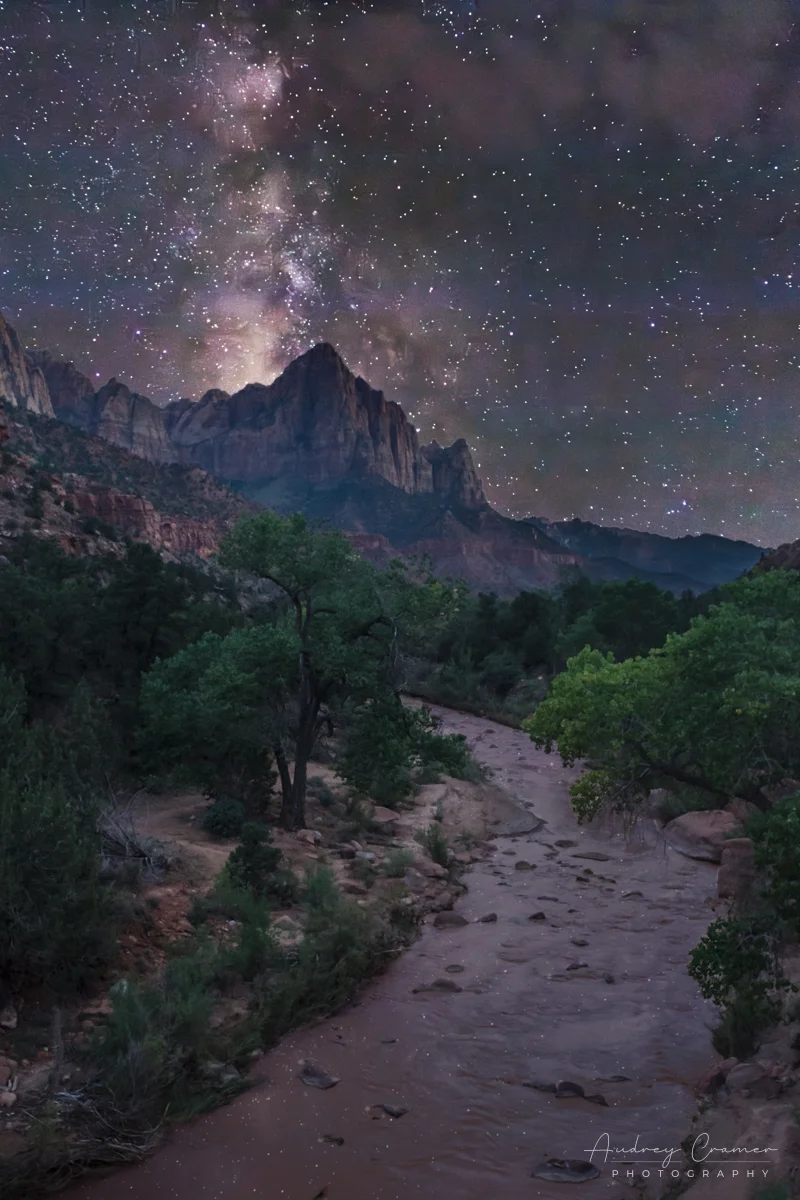Have you ever visited a beautiful viewpoint somewhere facing south, west, or east and seen a photographer set up for a long-term sit after you walk away as the light fails? You might see that from time to time. I have. Ever wonder what they are up to? Photography is the obvious answer. However, there’s more to it. They are probably trying to capitalize on Milky Way season. Ever heard that term before? Today, we’re covering what Milky Way season is.
If you walk for a while in astrophotography circles, you will eventually hear the term “Milky Way season.” It’s a common term which landscape photographers, and astrophotographers will use when deciding when to take a night photo. However, if you don’t know what’s going on, you might get a bit confused with the term.
What is “Milky Way Season?”

Firstly, Milky Way season isn’t a season of the year like spring or summer. Instead, Milky Way season is the window of the year where the galactic core (or bright spot) of the Milky Way is visible in the night sky. It really is that simple.
As the galactic core is always located in the southern skies, its visibility varies depending upon the Earth’s seasonal axial tilt. As a result, this visibility window varies between the northern and southern hemispheres. The southern hemisphere naturally has a larger window of visibility as opposed to the northern hemisphere. This means that the southern hemisphere has a wider shoulder season than the northern hemisphere does for Milky Way visibility.
The approximate windows for Milky Way visibility and peak visibility are listed below. These windows are approximate because the window does vary year to year. If you want specific dates, look those up on the internet.
| Hemisphere | Approx. Season Start Time | Approx. Peak Start Time | Approx. Peak End Time | Approx. Season End Time |
|---|---|---|---|---|
| Northern | Late February | March | September | Late October |
| Southern | Late January | Late February | Late October | Late November |
The Milky Way core will not be visible every second of every window. It rises and sets like the sun and moon do. This means that it will be visible for part of the night during the shoulder seasons of spring and autumn/fall. It will dominate the skies during summer and disappear entirely during winter.


The rising and setting of the Milky Way varies depending upon the time of year. If you want to see it extra early in the morning (say 3-4AM), then February to April is your window. If you want to see it early in the evening, then September to October is your window. The extremes of January/February and late October/November will only offer a very brief window of visibility before the sun rises or the core sets respectively.
How to Track the Milky Way
These days, there are plenty of options out there to help you track the Milky Way (especially the galactic core). Visibility is highly upon your location and time of year. This is why you will need to enter both a location and a date into any tracking applications you choose to use. Some may do this for you but both variables are required in order to make the equation works.

I happen to use a couple of apps to help me track the Milky Way. I use Star Walk 2 and Photo Pills, which are available for Android on the Google Play Store. Yes, Photo Pills is a premium app, and even an expensive 1 at that. Still, it’s packed full of useful tools which includes tracking golden hour, blue hour, and more. There’s predictive AI to show you exactly when the Milky Way core will line up with your planned foreground. This is only a taste of all the useful photography tools available. There’s a reason why it’s popular in photography circles.

The Star Walk 2 app is a much more visual app. You can actually see roughly what the night sky will look like. It points out constellations and other objects of interest too. I used it to learn that the Tsuchinshan-ATLAS comet would be very close to the galactic core for the following shot.
I also combine in my aurora tracking app for its overhead cloud tracking. After all, you can’t see the Milky Way nor an aurora if there’s clouds overhead. They hide the view.
There are plenty of other electronic options out there for tracking the Milky Way. These listed apps are only a couple of the more popular apps out there for photographers of all kinds. If you want your own Milky Way tracking app, you can go with these or you can perform a simple search of your app store of choice or an internet search. That search will yield plenty of results for you to choose from.
Conclusion
In conclusion, Milky Way season is the sizable window where you can view the Milky Way’s galactic core in the southern skies. It covers all of spring, summer, and autumn/fall. It even catches a tiny bit of winter in the southern hemisphere. If you want to track the Milky Way, there are plenty of options out there for you. These include websites and apps (both free and premium).
So, the next time you see a photographer camped out on a more southern-facing view long after the light is failing, now you know what he/she probably wants. He or she is probably after a Milky Way galactic core photo.





